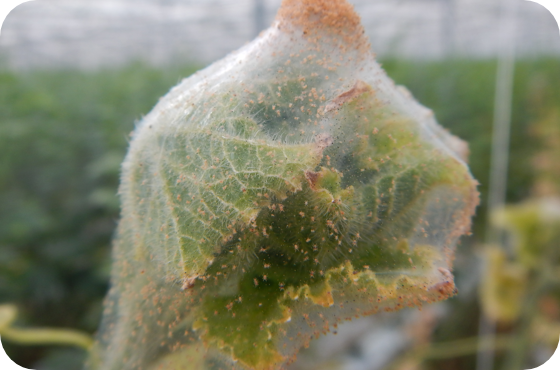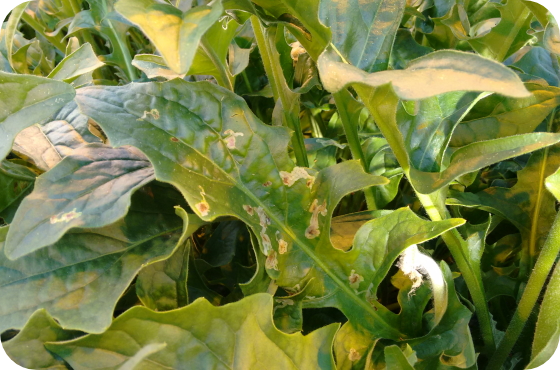Quality Products
Fast Delivery
Premium Service
Written by Jan-Paul de Wit | Last update: 26. June 2023
Spider mites, particularly Tetranychus urticae, are prevalent in numerous crops, especially in greenhouses. Known for their rapid reproduction in large numbers, these pests can inflict significant damage on plants in a very short time. Early detection and immediate action are important for effective control of spider mites.

Identifying adult greenhouse spider mites can be challenging due to their small size and elusive nature. They usually become noticeable when spider webs appear in the crop or when plants show severe damage, signaling that many spider mites have already infested the crops. Therefore, early detection is crucial.
The spider mites measure approximately 0.5 millimetres in length and have eight legs. They typically appear yellow-brown with distinct brown patches on their sides, though their colour can vary depending on the host crop. For instance, spider mites in cucumber crops are usually yellow-brown, while those on tomatoes often appear red-brown. Eggs are laid around leaf veins or on the underside of leaves near the petiole. Upon hatching, the larvae, which are orange-red, measure about 0.14 millimetres and have six legs.
Early signs of spider mite damage include tiny yellow spots appearing on leaves. The spider mites feed on plant sap from the undersides of leaves, particularly affecting young growth. The mites extract nutrients from the crop, leaving yellowing patches on the leaves that can eventually turn entirely yellow. This loss of chlorophyll hampers plant growth and production, and severe infestations may even lead to plant death. In addition, high populations of the greenhouse spider mite (Tetranychus urticae) can cause cosmetic issues. The plants will be covered with webs, creating ideal conditions for further infestations and spreading the problem.
Spider mite damage in crops:



The life cycle of the spider mite (Tetranychus urticae) includes five stages: egg, larva, protonymph, deutonymph, and adult. Spider mites lay their eggs on the underside of leaves, which can appear in a range of colours from orange and light yellow to green, red, brown, or almost black. The duration of each stage varies with temperature; at temperatures above 30°C, the entire cycle can be completed in about a week, while below 12°C, development comes to a halt. Throughout their growth, spider mites alternate between active and resting periods, and white molting skins are commonly found during their transitions between stages.
It's easy to mistake the greenhouse spider mite for the false spider mite due to their similar appearance. However, these mites belong to different families: greenhouse spider mites are from the Tetranychidae family, while false spider mites are from the Tenuipalpidae family.
Although both types may appear yellow to orange-red, they differ in their body patterns. The false spider mite is distinguished by a dark spotting pattern, whereas the greenhouse spider mite typically has only two spots on its body. Identifying these subtle differences is crucial for effective pest management.

Greenhouse spider mite

False spider mite
Spider mite control is often achieved through natural predators. Because spider mites prefer the underside of leaves to avoid sunlight, they can be difficult to detect. If you find spider mites in your crop, it's important to begin control measures immediately. For early infestations, start by removing the affected leaves to ensure the mites don't spread to healthy leaves. Immediate biological control is recommended.
For more extensive infestations, several control options are available. Chemical control with acaricides, especially contact products, can be effective. Proper spraying techniques are important as spider mites are usually found on the underside of leaves. Sulfur is an appropriate pesticide, but it interferes with gall midge behavior, so avoid using both at the same time. Apply treatments in the evening when spider mites are most active. In non-lit crops, adjust spraying techniques during the dark months when spider mites hibernate and are less sensitive to pesticides.
For biological control of spider mites, you can rely on natural enemies, including predatory mites, gall midges, and certain predatory bugs. Here’s an overview of the options:
Deploy these natural enemies broadly around infested plants, even if no visible infestation is present, to prevent rapid spread throughout the crop.